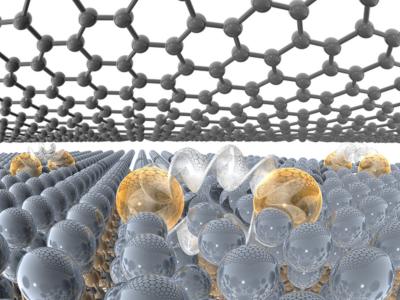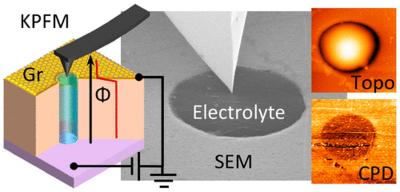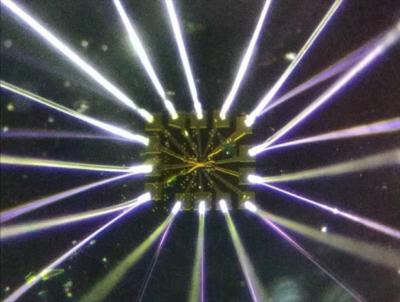
by MBF Admin | Mar 10, 2020 | 2D materials, Aerospace, AGM, Angstron Materials, Audio, Development, Electronics, Graphene applications, Investment, Products, Research, Technical / Research
Penn State researchers, in conjunction with Lawrence Berkeley National Lab and Oak Ridge National Lab, have developed an atomically thin materials platform developed that could enable a range of new applications in biomolecular sensing, quantum phenomena, catalysis...

by MBF Admin | Mar 9, 2020 | 2D materials, Aerospace, AGM, Angstron Materials, Audio, Development, Graphene applications, Investment, Membranes, Products, Research, Technical / Research
Researchers at NIST have used a graphene membrane to solve a long-standing problem affecting the understanding of both living cells and batteries. When a solid and an electrically-conducting liquid come into contact, a thin sheet of charge forms between them. Although...

by MBF Admin | Mar 5, 2020 | 2D materials, Aerospace, AGM, Angstron Materials, Audio, Boron Nitride, Development, Graphene applications, Investment, Magnetism, Products, Research, Technical / Research
A collaborative group of scientists has designed a device that makes use of graphene’s assorted talents: superconducting, insulating, and a type of magnetism called ferromagnetism. The multitasking device could enable new physics experiments, such as research in...

by MBF Admin | Mar 3, 2020 | 2D materials, Aerospace, AGM, Angstron Materials, Audio, Development, Graphene applications, Graphene coating, Haydale, Investment, Products, Research, Technical / Research, Textiles
Haydale has announced that it will now collaborate with the English Institute for Sport (EIS) and the Welsh Centre for Printing and Coating (WCPC) to deliver a range of advanced wearable technology sport apparel for elite athletes.Haydale has reported that initial...
by MBF Admin | Mar 3, 2020 | 2D materials, Aerospace, AGM, Angstron Materials, Audio, Development, Graphene applications, Graphene Solar, Investment, Products, Research, Technical / Research
Italian researchers from two Italian institutions have used graphene to develop a perovskite-silicon solar cell – a promising new solar technology – with an impressive conversion efficiency of 26.3%.The researchers added graphene to the titanium dioxide...
by MBF Admin | Mar 1, 2020 | 2D materials, Aerospace, AGM, Angstron Materials, Audio, Development, Graphene applications, Graphene Sensors, Investment, Medicine, Products, Research, Technical / Research
A new graphene-based sensor that measures stress via cortisol in sweat could be used by NASA to gauge the anxiety levels of astronauts.Developed by Caltech assistant professor of medical engineering, Wei Gao, the device features a plastic sheet etched with a laser to...





